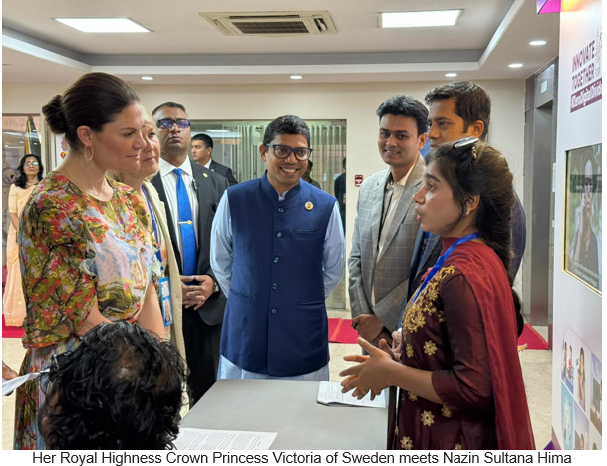
The story of 15-year-old Nazin Sultana Hima stands as a poignant testament to the harsh realities confronting countless young girls worldwide. It's a tale of unwavering resilience, a refusal to succumb to the unjust forces that threaten to rob her of both childhood and the pursuit of a brighter future.
When Hima's father sought to marry her off following an injury, it was her courageous defiance against the specter of child marriage that impelled her to take decisive action and reach out for assistance.
According to UNICEF, Bangladesh ranks among the top 10 countries globally for child marriage, with significant number of girls wed before they even reach the age of 18- the legal threshold for marriage in the country. Target 5 of the Sustainable Development Goals is dedicated to gender equality, including the eradication of child marriage by 2030. Suffice to say, Bangladesh faces a Herculean task in achieving this goal. With digital infrastructure in place, the country is now endeavoring to harness inclusive technology to address some of the most significant social problems.
During a recent visit to Bangladesh, Her Royal Highness Crown Princess Victoria of Sweden, accompanied by Minister for International Development Cooperation and Foreign Trade, Johan Forssell, made a profoundly insightful observation—a reminder for us all. They noted that, according to the International Telecommunication Union (ITU) and the United Nations Development Programme (UNDP), digitization could directly contribute to achieving around 70% of all SDG targets.
Just as Bangladesh's broader development trajectory over the past decade and a half has been propelled by digitization through the "Digital Bangladesh" initiative, it must now harness technological innovations to address enduring challenges like child marriage.
Returning to Hima's narrative, her courageous intervention at the age of 15 signifies a pivotal moment in seizing control of her own destiny. Traditionally in Bangladesh, once a girl's marriage has been arranged, her fate is sealed. However, the existence of a national helpline, 333, provided Hima with a literal lifeline. Just before the time of her wedding rituals, she somehow managed to make that single fateful call, resulting in authorities taking action within an hour of the call to save her from child marriage.
Hima's story is not an isolated incident. This single act by a determined teenager possesses the potential to catalyze social transformation. Since the introduction of the 333 helpline, inspired girls like Hima have found the courage to halt their own marriages. Moreover, this movement has sparked a significant shift in societal attitudes, with guardians becoming more cautious about forcing child marriages.
Hima's story is one of triumph, attributed not only to 333 but also to diligent civil servants who swiftly responded to her call, halting her marriage within an hour and securing a commitment from her father to await her legal maturity. In the future, there are plans to integrate AI within the national helpline to facilitate even faster responses and support coordination. As Hima recounted her tale to Crown Princess Victoria, her words not only validate her actions but also underscore the significance of initiatives like 333, which have prevented over 6,500 child marriages in Bangladesh and beyond.
Today, Hima is diligently pursuing her studies and supporting her family through teaching. In her own resolute words: "I'm determined to make my own future. My story shows how important it is to be strong and fight for what's right. Let's make a world where every girl can dream big and make it happen".









